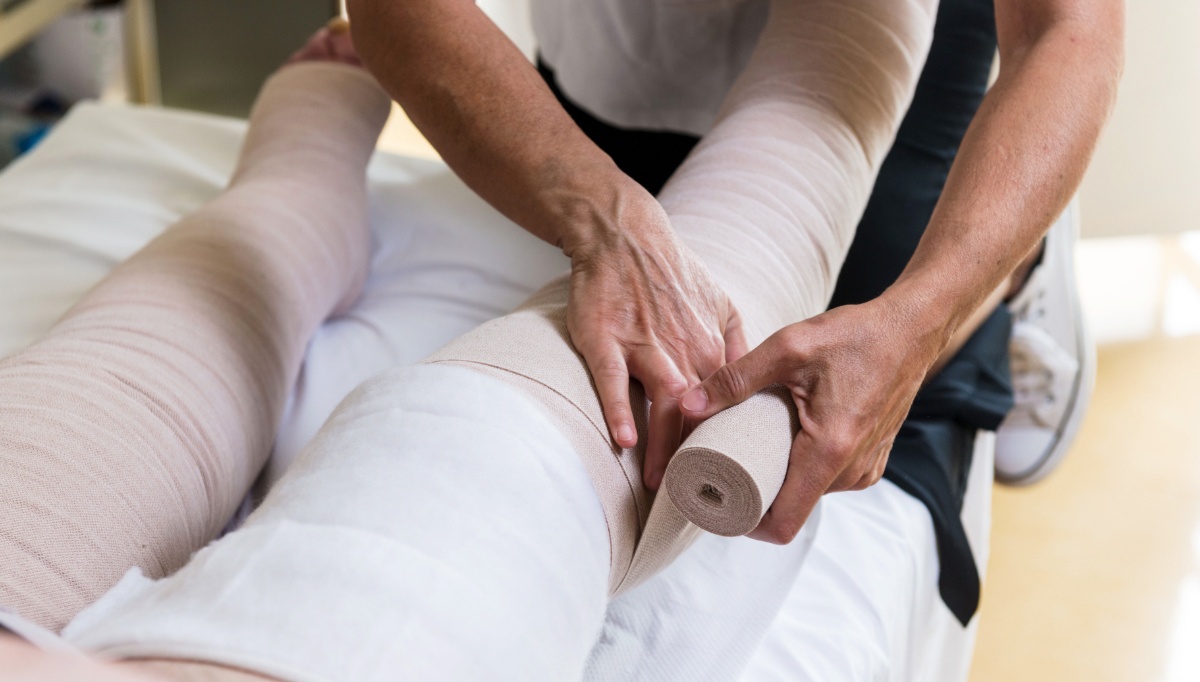Identification of right treatment with Ankle-Brachial Index (ABI)
Timely assessment and effective management of patients with wounds is fundamental, ensuring that unwarranted variation is minimised, that assessment is accurate, care delivered promptly and, as a result, healing is optimised (Wounds UK, 2016). A holistic assessment includes an Ankle-Brachial Pressure Index (ABPI) recording, which serves to confirm the findings of a full assessment (Lim et al, 2018).

Assessment of ABPI is an important component of the holistic leg ulcer assessment process and informs the evidence-based management of lower limb wounds (Wounds UK, 2019a; b); however, this is not always undertaken promptly.
The traditional handheld Doppler ABPI assessment procedure is an advanced assessment skill that requires an appropriately trained and experienced healthcare professional. The procedure takes at least 40 minutes and requires the patient to lie down for a minimum of 10 minutes before the test (Al-Qaisi et al, 2009). Due to the length of the process and the need to be specifically trained, the implementation od ABPI into the standard practice of assessing every patient with lower extremity wounds requiring compression.
The MESI technology offers an opportunity to improve outcomes for patients with lower limb wounds or PAD. We have developed three crucial steps which ensure that the level of assigned compression therapy is safe.
STEP 1: Identify patients
Ankle-Brachial Index is an important measurement in wound care management and in compression therapy.
ABI measurement should be performed to:
Determine adequate arterial blood flow prior to compression therapy
Rule out PAD/LEAD with a lower extremity wound
Assess wound healing potential
Evaluate therapeutic outcome
Determine safe level of compression
*ABI: Quick Reference Guide for Clinicians (WOCN guidelines)
STEP 2: Perform an Ankle-Brachial Index (ABI) measurement

With MESI ABPI MD, the ABI really becomes a simple measurement. After positioning the three cuffs on the patient’s extremities, we receive a reliable ABI result in just 1 minute, along with the pulse waveform recording. With this result, we can confidently define the appropriate treatment for the patient.
STEP 3: Define treatment

ABI measurement is an indispensable part of any medical compression assessment and successful wound care management. With the ABI measurement report, healthcare professionals receive all the crucial information about the state of patient’s arteries and can, therefore, define the safe level of compression and accelerate the healing process of the ulcer.
With the rapid adoption of MESI ABPI MD® in healthcare facilities and general practices worldwide, more and more clinicians are able to give better diagnoses of leg ulceration, resulting in better choices of treatment methods that help their patients lead happy and productive lives.
Looking for MESI ABPI MD?
Meet its smarter successor – the MESI mTABLET ABI. This wireless, 4-cuff solution brings ABI measurement into the era of integrated diagnostics. Part of the modular MESI mTABLET platform, it delivers a 1-minute PAD assessment and expands with other diagnostic tools to fit your clinical needs.
Send inquiry